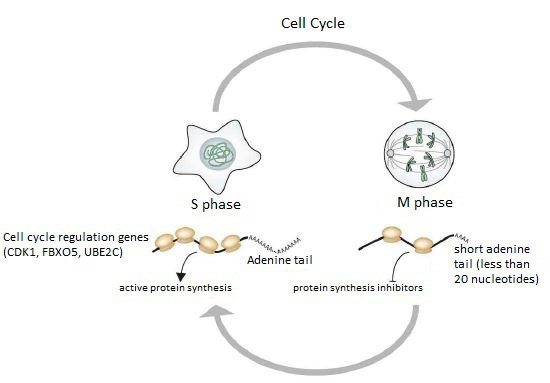주메뉴
- About IBS 연구원소개
-
Research Centers
연구단소개
- Research Outcomes
- Mathematics
- Physics
- Center for Underground Physics
- Center for Theoretical Physics of the Universe (Particle Theory and Cosmology Group)
- Center for Theoretical Physics of the Universe (Cosmology, Gravity and Astroparticle Physics Group)
- Dark Matter Axion Group
- Center for Artificial Low Dimensional Electronic Systems
- Center for Theoretical Physics of Complex Systems
- Center for Quantum Nanoscience
- Center for Exotic Nuclear Studies
- Center for Van der Waals Quantum Solids
- Center for Relativistic Laser Science
- Chemistry
- Life Sciences
- Earth Science
- Interdisciplinary
- Center for Neuroscience Imaging Research (Neuro Technology Group)
- Center for Neuroscience Imaging Research (Cognitive and Computational Neuroscience Group)
- Center for Algorithmic and Robotized Synthesis
- Center for Genome Engineering
- Center for Nanomedicine
- Center for Biomolecular and Cellular Structure
- Center for 2D Quantum Heterostructures
- Center for Quantum Conversion Research
- Institutes
- Korea Virus Research Institute
- News Center 뉴스 센터
- Career 인재초빙
- Living in Korea IBS School-UST
- IBS School 윤리경영


주메뉴
- About IBS
-
Research Centers
- Research Outcomes
- Mathematics
- Physics
- Center for Underground Physics
- Center for Theoretical Physics of the Universe (Particle Theory and Cosmology Group)
- Center for Theoretical Physics of the Universe (Cosmology, Gravity and Astroparticle Physics Group)
- Dark Matter Axion Group
- Center for Artificial Low Dimensional Electronic Systems
- Center for Theoretical Physics of Complex Systems
- Center for Quantum Nanoscience
- Center for Exotic Nuclear Studies
- Center for Van der Waals Quantum Solids
- Center for Relativistic Laser Science
- Chemistry
- Life Sciences
- Earth Science
- Interdisciplinary
- Center for Neuroscience Imaging Research (Neuro Technology Group)
- Center for Neuroscience Imaging Research (Cognitive and Computational Neuroscience Group)
- Center for Algorithmic and Robotized Synthesis
- Center for Genome Engineering
- Center for Nanomedicine
- Center for Biomolecular and Cellular Structure
- Center for 2D Quantum Heterostructures
- Center for Quantum Conversion Research
- Institutes
- Korea Virus Research Institute
- News Center
- Career
- Living in Korea
- IBS School
News Center
Role of poly(A) tails in mitosis- New research shows that poly(A) tail length regulates translation of somatic cell cycle - May 6, 2016 Before mRNA can be used by ribosomes as a guide to build proteins, it has to undergo a series of processing steps. This includes getting a series of adenine (A) nucleotides added by poly(A) polymerase to one of the mRNA’s ends. This addition of multiple (A) nucleotides results in a poly(A) tail. After this process is completed, the mRNA can continue on its way to be exported out of the nucleus where it will be used for translation. Until now, it was thought that the length of these poly(A) tails were critical for mRNA stability and translation, but their actual correlation were unknown. Researchers working at the IBS Center for RNA Research have shown that translation efficiency and poly (A) tail length are not linearly correlated and only coupled in limited range. This challenges the established view of mRNA translation and offers new insight into the somatic cell cycle. To show this, the IBS team used two measuring processes, the first called TAIL-seq, something that they pioneered in 2014 to count nucleotides on the genomic level and also ribosome profiling which reveals translational efficiency. First author Jong-Eun Park said that "By combining these two techniques, I was able to compare poly(A) tail length and translation efficiency and find if there is a correlation between them".
The most recently established theory has been that tail length and efficiency is only coupled in embryonic cells but not in somatic cells since in embryonic cells the cell cycles are synchronized and in somatic cells they are heterogeneous. According to Park, "We synchronized the cell cycles in somatic cells to generate homogeneous data and found that there is a certain length of poly(A) tails that can provide fully efficient translation in somatic cells."
They also found several genes that are deadenylated (they lose some of their adenine) before the M-phase (the phase where the cell divides, called mitosis) and they saw that when the tail length gets shorter than 20 adenines, it represses the translation. Park believes that this repression is important for M-phase progression. "Finding the exact role of the poly(A) tail is important," says Park, "by doing this research, we are trying to find the regulatory role that the poly(A) tail has." Based on this research, there are two things the team is looking to pursue in the future. First, they now know what kind of genes have regulated poly(A) tails and they want to know how they are regulated. Second, they are trying to assess the importance of this regulation in cell cycle progression. Interestingly, they found large differences in tail lengths of poly(A) tail regulatory genes like CDK1, TOP2A and FBXO5. These genes have a known function in the cell cycle; they regulate the progression in the M-phase. Park says "For those genes, most studies have been focused on protein level. It will be interesting to study what’s so special about their mRNA." Mis-regulation of cell cycle is hallmark of human cancers. The researchers at the Center for RNA Research are not specifically looking at the relationship of the poly(A) tail cycle on tumorigenesis but Park believes that this research is, "helping to build the foundation for further work which could be applied towards cancer research". Daniel Kopperud Notes for editors - References - Media Contact - About the Institute for Basic Science (IBS) |
|||
|
|
| Next | |
|---|---|
| before |
- Content Manager
- Public Relations Team : Yim Ji Yeob 042-878-8173
- Last Update 2023-11-28 14:20













